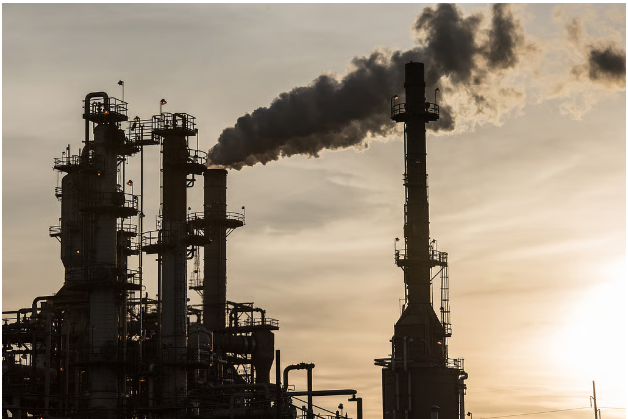



The UNEP Emissions Gap Report 2025 warns that weak national pledges keep the world on a 2.3–2.5°C warming path. Global emissions rose 2.3% in 2024, widening the gap to the 1.5°C goal amid poor implementation, limited finance, and stalled G20 climate action.

Copyright infringement not intended
Picture Courtesy: DOWNTOEARTH
The Emissions Gap Report, published by the United Nations Environment Programme (UNEP), monitors global progress toward the temperature targets outlined in the Paris Agreement
|
Read all about: UN Environment Programme (UNEP) l UNEP Adaptation Gap Report 2025 Findings |
It evaluates the disparity between current national pledges, known as Nationally Determined Contributions (NDCs), and the actual reductions required to restrict warming to "well below 2°C," with a preferred goal of remaining below 1.5°C.
Warming Trajectory Remains Far Off-Track
Global temperatures are projected to rise by 2.3–2.5°C this century, even if all NDCs are implemented.
Record-High Emissions
The year 2024 was the hottest ever recorded, marked by extreme weather, record ocean heat, wildfires, and increasing GHG concentrations; Global greenhouse gas (GHG) emissions hit a record 57.7 GtCO₂e in 2024.

To stay on a 1.5°C pathway, global emissions must drop 42% by 2030 and 57% by 2035 (relative to 2019).
For a 2°C pathway, the cuts needed are 28% by 2030 and 37% by 2035—levels far beyond what current pledges deliver.

As of September 2025, only 60 countries (covering 63% of global emissions) had submitted or announced new NDCs for 2035. Several G20 economies, including India, missed the deadline.
The shortfall stems from both weak targets and poor implementation.
Every fraction of a degree of warming increases risks of floods, droughts, and heatwaves.
Between 2010–2020, people in vulnerable regions were 15 times more likely to die from climate-related disasters. (Source: WHO)
Unchecked warming could slash global GDP by 10% by 2050. (Source: WEF)
Climate impacts undermine progress on poverty reduction, food security, and energy access.
Lack of Climate Finance
Developed countries are missing their target to double 2019 adaptation finance by 2025. Only $26 billion of the required $310 billion per year was delivered in 2023. (Source: UN)
Geopolitical Strains
Global conflicts and economic uncertainty are undermining climate cooperation.
Dependence on Fossil Fuels
Continued subsidies and reliance on fossil fuels slow the global transition to clean energy.
The Emissions Gap Report 2025 highlighted that the world is off course to meet the 1.5°C target, and time is running out. Avoiding irreversible damage will require:
Source: DOWNTOEARTH
|
PRACTICE QUESTION Q. The UNEP report highlights the 'implementation gap'. This concept refers to the discrepancy between: A) Country's legally binding policies and its international climate pledges (NDCs). B) Global North's and South's per capita emissions. C) Need for adaptation finance and the funds available. D) Scientific understanding of climate change and public perception. Answer: A Explanation: The 'implementation gap' refers to the difference between what countries have pledged to do in their NDCs and what their current domestic policies are actually on track to achieve. |
The annual Emissions Gap Report, published by the United Nations Environment Programme (UNEP), assesses the difference between anticipated future global greenhouse gas emissions (based on current national commitments) and the emission levels needed to meet the Paris Agreement's goals of keeping global warming well below 2°C, ideally at 1.5°C.
Global greenhouse gas emissions reached a record high of 57.7 gigatons of CO2 equivalent in 2024, an increase of 2.3% over the previous year. This indicates that emissions are not yet peaking, which is required to stay on track for the 1.5°C target.
Established in 1972 after the UN Conference on the Human Environment in Stockholm, Sweden. It provides leadership and encourages collaboration for environmental protection. UNEP's headquarters are in Nairobi, Kenya, making it the first UN body located in the Global South.







© 2025 iasgyan. All right reserved